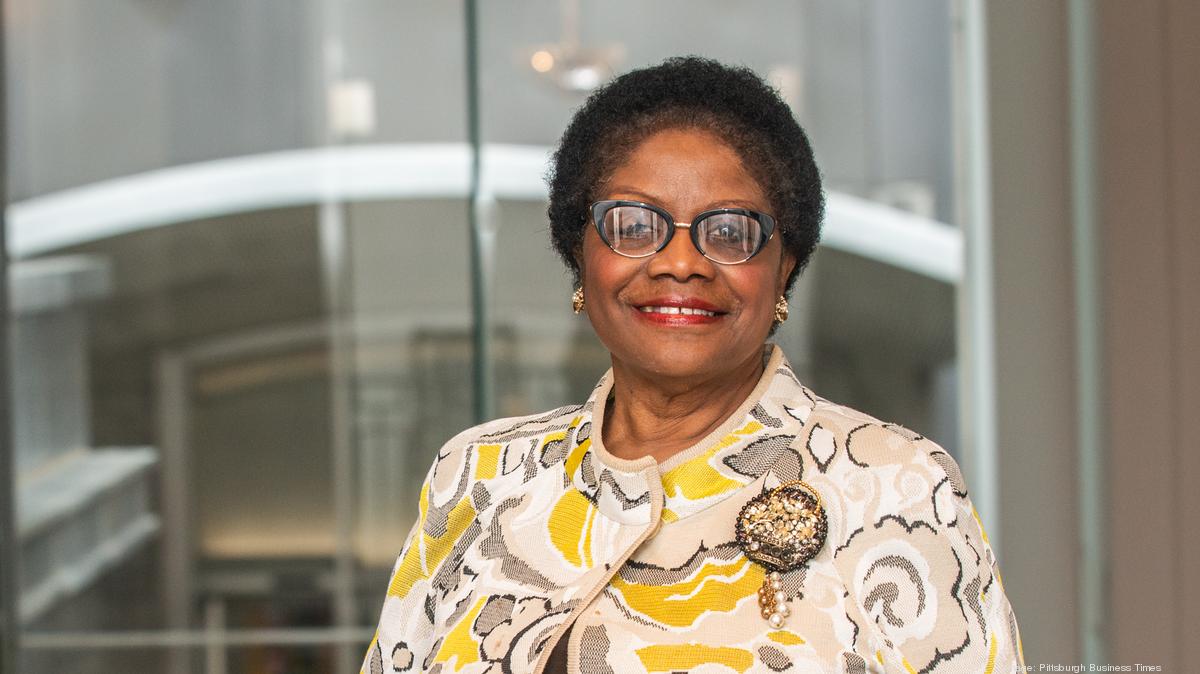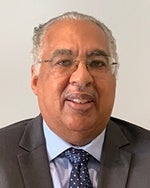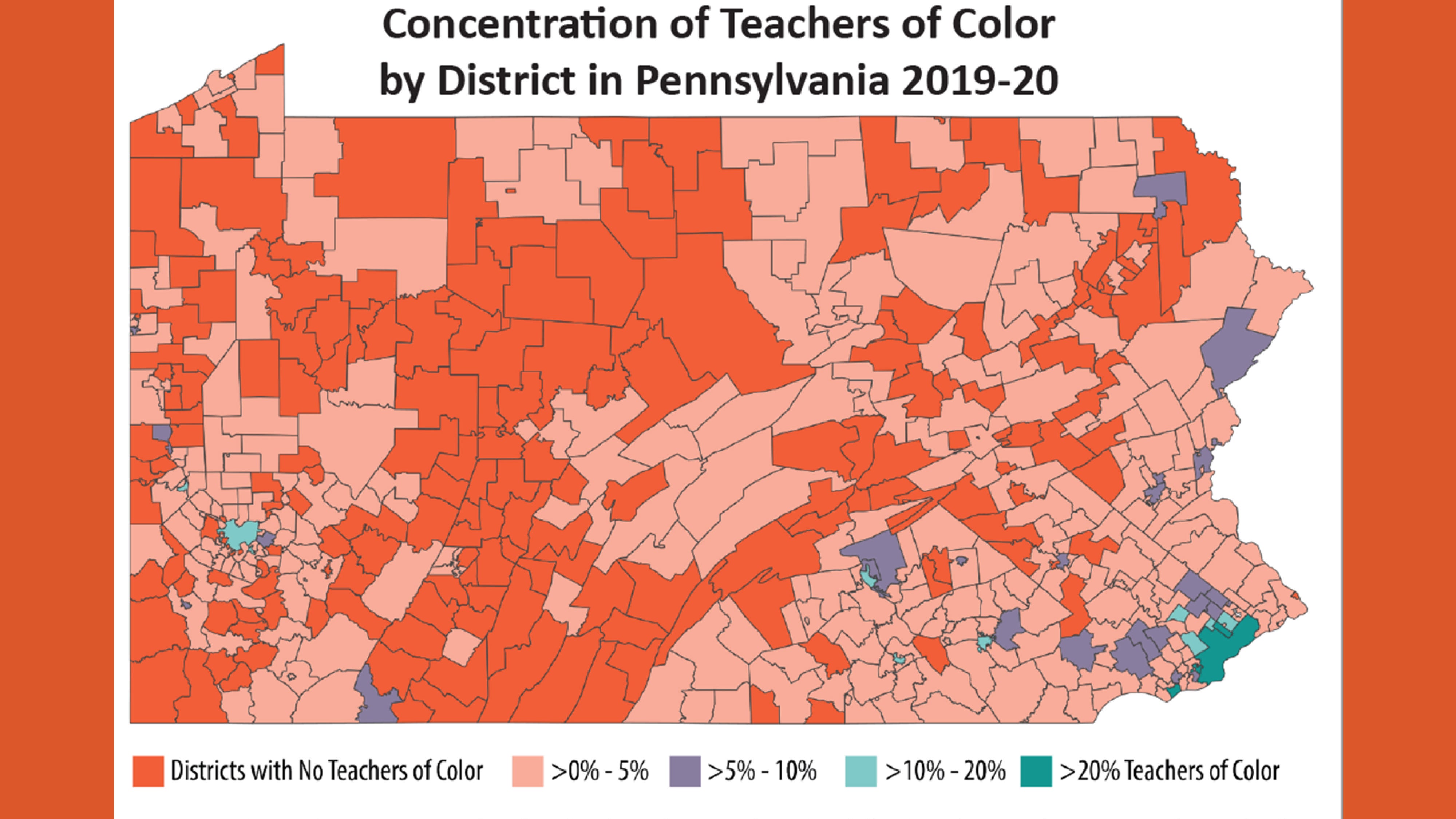The statistics were sobering. Fully half of the public schools in Pennsylvania and more than one-third of the state’s school districts had no teachers of color on staff.
For a team seeking to improve school leadership in the Keystone State, those 2020 figures from the Research for Action education research group drove home the need for action.
After all, the team members reasoned, without a diverse pool of teachers how could school districts hope to have a diverse pool of principals, given that school leader ranks are filled with former teachers?
The team in question was the Pennsylvania cohort in Wallace’s ESSA Leadership Learning Community, a six-year effort in which 11 states brought together state education officials, local school districts, community organizations and others to collaborate on promoting high-quality school leadership in their locales. (The ESSA part of the name comes from the Every Student Succeeds Act, a major source of federal funding for education.) These teams were unusual in that they forged partnerships among people and institutions that don’t normally sit at the same table, despite their common interest in improving public school education.
 “For each partner, educator diversity had been a priority,” said Esther Bush, who was the president and CEO of the Pittsburgh Urban League and a member of the Pennsylvania team. “But we had been working in silos. By coming together, we could see that we wanted the same thing.”
“For each partner, educator diversity had been a priority,” said Esther Bush, who was the president and CEO of the Pittsburgh Urban League and a member of the Pennsylvania team. “But we had been working in silos. By coming together, we could see that we wanted the same thing.”
The team was comprised of state, district and local partners:
- A+ Schools, which works to improve equity in Pittsburgh schools
- Duquesne University
- The Heinz Endowments
- NEED (Negro Educational Emergency Drive), which helps students prepare for and access college
- Pennsylvania Department of Education
- Pennsylvania Educator Diversity Consortium, a nonprofit working to increase educator diversity in the state
- Pittsburgh Public Schools
- The School District of Philadelphia
- Urban League of Greater Pittsburgh, the local affiliate of the national civil rights organization
Initially, the group hoped only to add a written chapter on equity to the superintendent’s academy, a two-year professional development program for school leaders across the state. Eventually, it set its sights on galvanizing the entire state around diversifying the teacher workforce, beginning with the western part of Pennsylvania, which had fewer teachers of color than the eastern part.
The result to date? A number of accomplishments. Using technical assistance grants, the team commissioned a study on how to recruit and retain teachers in western Pennsylvania. It then began working with Pennsylvania universities on an effort, now in its early stages, to help high schoolers develop an interest in teaching and provide a pathway into the universities’ education programs.
In addition, the state education agency co-sponsored a number of conferences and meetings focused on the need for a more diverse school leader workforce. The agency’s work incorporated evidence from the Urban League about the beneficial impacts on students of having a diverse educator workforce, as well as data on the disparity between percentages of Black students and percentages of principals of color.
 One key to the progress was that the team members worked together well. Andy Cole, an education consultant who facilitated the team’s work for Wallace, points to the simple fact that the Pennsylvanians were able to have dinner together the night before their day-long convenings and got to know each other one on one. “Breaking bread helps you see each other as people,” he said.
One key to the progress was that the team members worked together well. Andy Cole, an education consultant who facilitated the team’s work for Wallace, points to the simple fact that the Pennsylvanians were able to have dinner together the night before their day-long convenings and got to know each other one on one. “Breaking bread helps you see each other as people,” he said.
Although the ESSA Leadership Learning Community formally ends in December of 2022, the Pennsylvania team is hoping to sustain its endeavors through a coalition it formed with the Pennsylvania Educator Diversity Consortium, a nonprofit working to increase the number of teachers of color in the state. “This is an effort that worked,” Bush said. “The United States needs these new models.”
For states seeking to develop similar efforts, Bush urges state leaders to look to expanding work that is already under way.
“It might be a small community organization, it might be a PTA in a single school,” she said. “Try to reach out and pay attention to the baby steps that are being made and try to expand those steps into something that can positively impact all of our efforts.”
Here are three lessons the team learned along the way:
Community-based organizations deserve a seat at the table – sometimes at the head of the table.
The effort “encouraged all voices to be heard and respected,” said Bush, underscoring the importance of making sure the community perspective was represented. “This taught communities that their voices were powerful.”
Cole saw the community partners on the team shift into more of a leadership role as it became apparent that district and community engagement would be a significant part of the work. The community-based organizations had stronger relationships with the school districts than the state department of education, according to Cole. And in turn, by bringing those community voices up to the state level, the state agency helped elevate and amplify the community’s efforts and needs around teacher diversity.
Data are key to garnering support.
A turning point in the Pennsylvania team’s work was the introduction of a map which depicted vivid data on the percentage of teachers of color in each school district in the state.

The map clearly illustrated that teachers of color compose less than 5 percent of the teacher workforce in the vast majority of districts, with many districts having no teachers of color at all. Seeing the data so starkly laid out shifted not only the focus of the group but its engagement in the effort. The team, particularly state agency leaders, realized lack of teacher diversity was a significant problem for districts, communities and students that needed to be urgently addressed, according to Cole.
Strong relationships and trust are critical to collaboration.
“We were working with people, not organizations,” Cole said of the relationships built as part of the learning community. “Those relationships cannot be minimized.”
Cole pointed to “good-faith” conversations between team members as well as learning from other state teams as crucial to making progress. He noted that it was helpful to see other states grappling with their own challenges and to jointly acknowledge that the work is hard.
“States should know it’s okay to interact with other states and other organizations,” he said. “You can learn a lot from each other.”
Bush saw that trust build over time. She observed that while each organization or individual may have had a different approach, the team members respected those differences because they all had the same end goal – to improve educator diversity and, in turn, better support all students in Pennsylvania.



